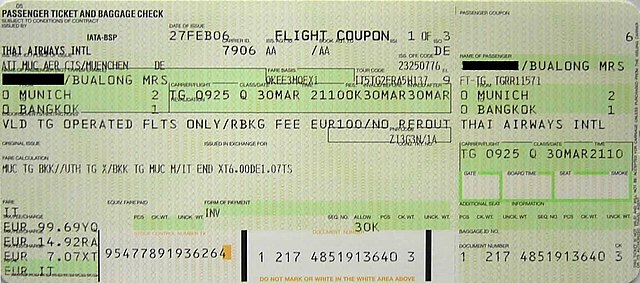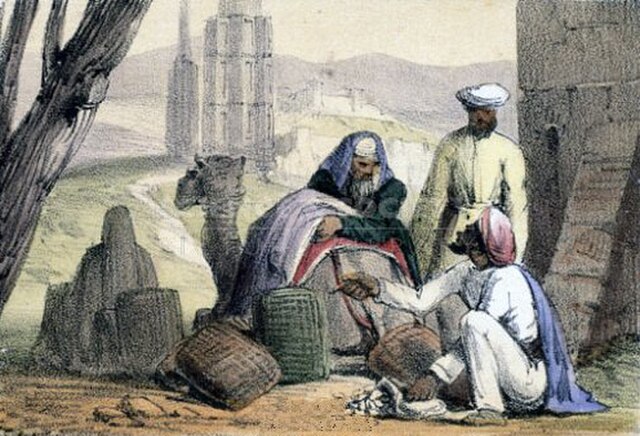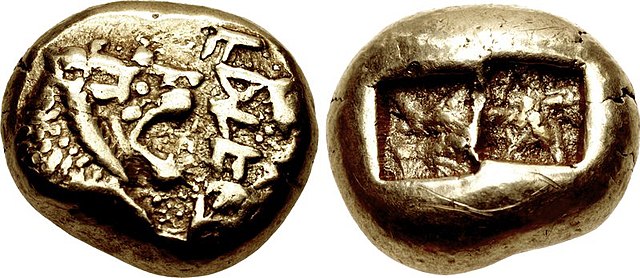ISO 4217 is a standard published by the International Organization for Standardization (ISO) that defines alpha codes and numeric codes for the representation of currencies and provides information about the relationships between individual currencies and their minor units. This data is published in three tables:Table A.1 – Current currency & funds code list
Table A.2 – Current funds codes
Table A.3 – List of codes for historic denominations of currencies & funds
An airline ticket showing the price with ISO 4217 code "EUR" (bottom left) and not with euro currency sign "€"
A list of exchange rates for various base currencies given by a money changer in Thailand, with the Thailand Baht as the counter (or quote) currency. Note the Korean currency code should be KRW.
A currency is a standardization of money in any form, in use or circulation as a medium of exchange, for example banknotes and coins. A more general definition is that a currency is a system of money in common use within a specific environment over time, especially for people in a nation state. Under this definition, the British Pound sterling (£), euros (€), Japanese yen (¥), and U.S. dollars (US$) are examples of (government-issued) fiat currencies. Currencies may act as stores of value and be traded between nations in foreign exchange markets, which determine the relative values of the different currencies. Currencies in this sense are either chosen by users or decreed by governments, and each type has limited boundaries of acceptance; i.e., legal tender laws may require a particular unit of account for payments to government agencies.
Cowry shells being used as money by an Arab trader
The world's oldest coin, created in the ancient Kingdom of Lydia
Song dynasty Jiaozi, the world's earliest paper money
A list of exchange rates for various base currencies given by a money changer in Thailand, with the Thailand Baht as the counter (or quote) currency. Note the Korean currency code should be KRW.





